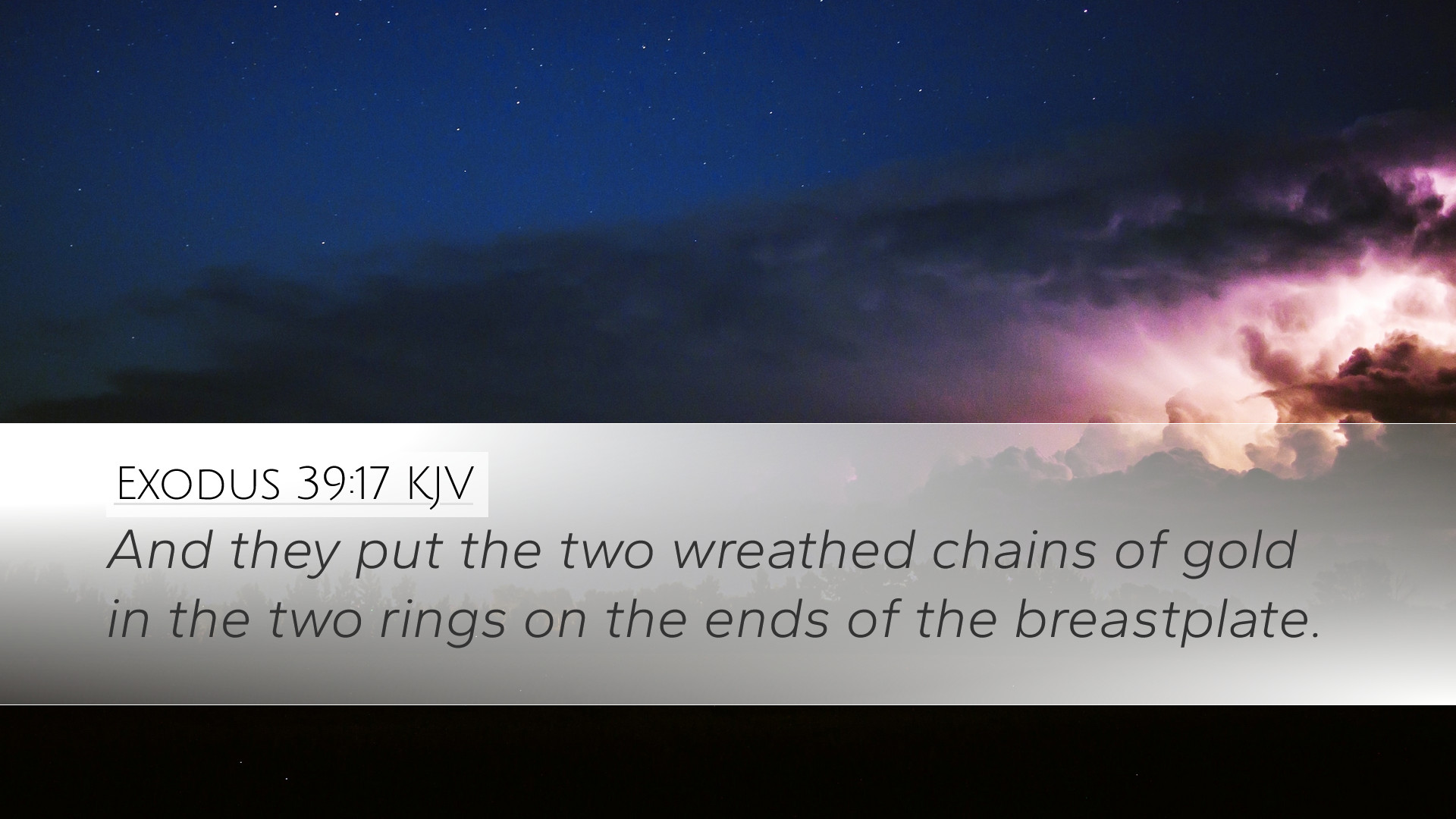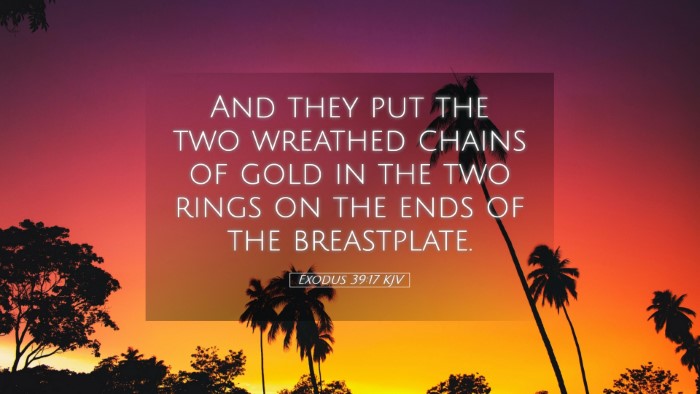Exodus 39:17 Commentary
Verse Reference: Exodus 39:17
“And they put the breastplate on, and they put in the breastplate the Urim and the Thummim.”
Introduction
This verse describes an essential part of the high priest’s attire, specifically the breastplate that contains the Urim and Thummim. The significance of this breastplate is profound, representing the divine guidance that the high priest would invoke on behalf of Israel. Scholars like Matthew Henry, Albert Barnes, and Adam Clarke provide a rich tapestry of insights regarding this verse that illuminate its theological and practical implications.
Overview of the Breastplate
The breastplate, known as the Breastplate of Judgment, was a critical element of the high priest's ephod. It was not merely ornamental but served a vital purpose in the spiritual administration of Israel. Its design and function are elaborated in the broader context of the priestly garments, which symbolize the holiness required for mediating between God and His people.
Significance of the Urim and Thummim
The Urim and Thummim, translated as “lights and perfections,” were integral as instruments of divine revelation. While their exact nature remains a matter of scholarly debate, it is posited that they were likely objects used to discern God's will. Adam Clarke suggests that they could have been stones or lots that provided clear answers to inquiries made by the high priest on behalf of the Israelites.
- Matthew Henry highlights their role in decision-making, indicating that these elements were used in critical moments, enabling the high priest to act as a conduit for God’s will.
- Albert Barnes elaborates on the importance of divine guidance, suggesting that the Urim and Thummim ensured the high priest's decisions aligned with God's purpose for Israel.
The Symbolism of the Breastplate
The breastplate is rich in symbolism. Each of the twelve stones set in the breastplate represented one of the tribes of Israel, indicating that the high priest bore the people before God. This act of bearing represents intercession and solidarity between God and His covenant people.
Intercession and Representation
Matthew Henry emphasizes that the high priest, adorned with the breastplate, closely identifies with the people he represents. The high priest's actions on behalf of Israel underline the idea of vicarious representation, a prelude to Christ’s ultimate mediatorial work. This foreshadowing highlights the continuity of God’s redemptive plan throughout scriptural history.
Theological Implications
The inclusion of the Urim and Thummim within the breastplate emphasizes God’s active guidance in the lives of His people. Theologically, this interaction between God and Israel signifies a community that exists at His behest, reliant upon His wisdom and decree for direction.
Practical Insights for Believers
For modern-day readers and theologians, Exodus 39:17 provides profound lessons. It reminds believers of the importance of seeking God’s guidance in decision-making processes. Just as the high priest relied on the Urim and Thummim, Christians today are called to seek divine direction in their lives and ministries.
The Role of the High Priest
The high priest's role embodies a significant priestly duty, serving not only as a mediator but also as a model for Christian leadership. The high priest, vested in holy garments, stood before God on behalf of the people—a prototype of Christ, who serves as the eternal high priest. The book of Hebrews expands upon this theme, depicting Christ's ultimate sacrifice and mediatory role.
- Adam Clarke notes the high priest's unique calling, emphasizing how the attire symbolized purity, devotion, and service to God.
- The necessity of preparation and holiness required for the high priest's role serves as a lesson for contemporary leaders in the church today.
Conclusion
Exodus 39:17 is much more than a narrative detail; it encapsulates themes of divine guidance, representation, and intercession. Through the lens of the high priest's breastplate and the Urim and Thummim, believers today are invited to reflect on their relationship with God, the importance of spiritual leadership, and the necessity of seeking His will in all matters. This verse beckons pastors, students, theologians, and scholars alike to understand the profound implications of divine guidance in the life of faith. As they delve deeper into the richness of God's Word, they are encouraged to embrace the exemplary figure of Christ, our ultimate High Priest, who intercedes for them continually.


